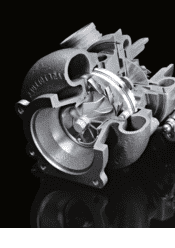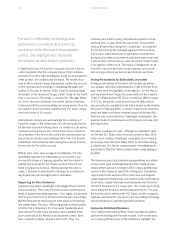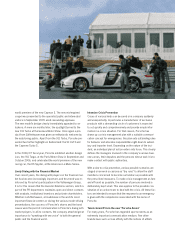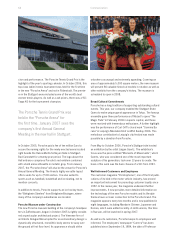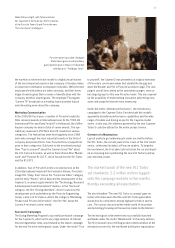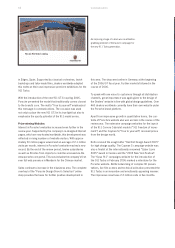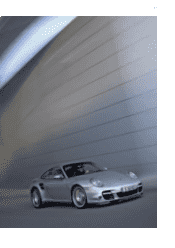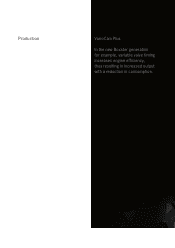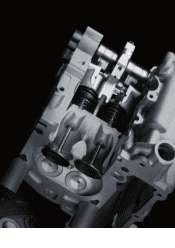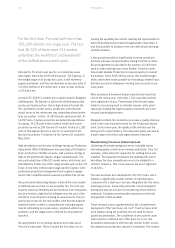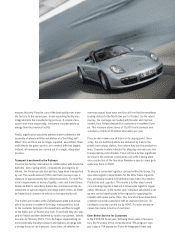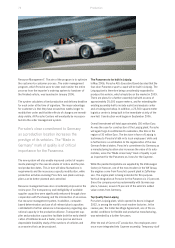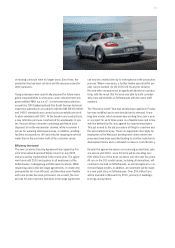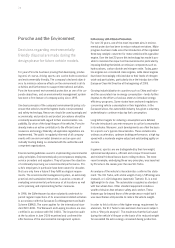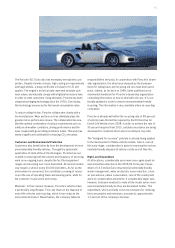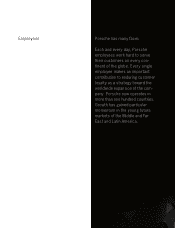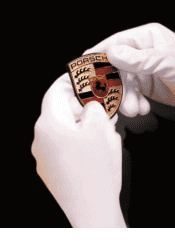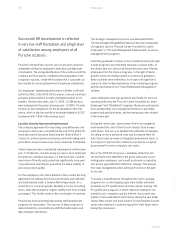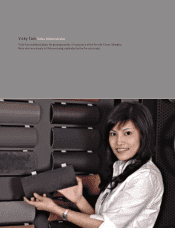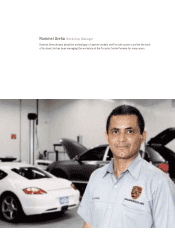Porsche 2005 Annual Report Download - page 73
Download and view the complete annual report
Please find page 73 of the 2005 Porsche annual report below. You can navigate through the pages in the report by either clicking on the pages listed below, or by using the keyword search tool below to find specific information within the annual report.
ensures that only Porsche cars of the best quality ever leave
the factory. In the review year, a new repainting facility was
integrated into the manufacturing process. It requires less
space and, more importantly, consumes considerably less
energy than the previous facility.
Finally, significant productivity advances were achieved in the
assembly of wheels with the installation of a “tire-filling bell”.
Wheel rims and tires are no longer supplied, assembled, filled
and fitted to the given sports car in several different stages;
instead, all measures are carried out in a single, integrated
process.
Transport transferred to the Railways
Porsche has further intensified its collaboration with Deutsche
Bahn AG. Since spring 2006, components and engines for
Valmet, the Finnish production partner, have been transported
by rail. This avoids almost 7,000 road truck journeys over a
distance of approximately five million kilometers. To meet Por-
sche’s requirements in terms of quality, costs and transit times,
Deutsche Bahn’s subsidiary Railion AG commissioned the de-
velopment of special wagons and mega-trailers that can either
be hauled by a commercial vehicle or transported by rail.
The trailers are loaded at the Zuffenhausen plant and at sup-
pliers’ factories in southern Germany, transported by truck
to the container terminal in Kornwestheim and then brought
to the Baltic port of Rostock by train. From there they are ship-
ped to Finland and then delivered by road to our partner, Valmet.
As early as February 2001, Porsche began implementing an
environmentally-friendly transport and logistics strategy with
a strong focus on rail transport. Since then, all vehicles for
overseas export have been sent by rail from the Kornwestheim
loading station to the North Sea port of Emden. On the return
journey, the carriages are loaded with Boxster and Cayman
models from Finland destined for customers in southern Euro-
pe. This measure alone saves of 15,000 truck journeys over
a distance of almost 20 million kilometers per year.
Porsche also makes use of trains at its Leipzig plant. Once
a day, the pre-built bodyshells are delivered by train to the
plant’s own railway station, from where they join the production
lines. Cayenne models intended for shipping overseas are also
transported by rail to Emden. There will be a further significant
increase in the volumes conveyed by rail at the Leipzig plant
once production of the four-door Panamera sports coupé gets
underway there in 2009.
To ensure a consistent logistics concept within the Group, the
operative logistics departments for the After Sales organiza-
tion, previously located in Distribution have been relocated to
Production and Logistics. This marks a further step toward
concentrating logistical tasks in a Group-wide logistics organi-
zation. Moreover, in the review year, individual subsidiaries set
up new central warehouses in the regions for supplying the
markets with spare parts. Here, too, new structures have been
created to provide customers with an improved service. Ac-
cording to a survey carried out by ADAC, Porsche already re-
ceives top marks in terms of customer.
Even Better Service for Customers
In the 2005/06 fiscal year, following three years of prepara-
tion, the first step of the comprehensive “PIA program” was
put in place. PIA stands for “Porsche Integrated Order and


